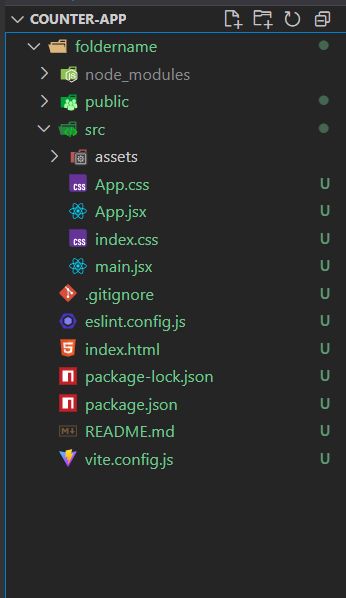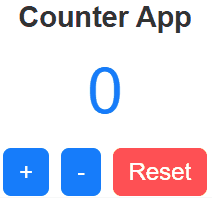ReactJS HigherOrder Components (original) (raw)
ReactJS Higher-Order Components
Last Updated : 24 Apr, 2025
Higher-order components (HOC) are an advanced technique in React that is used for reusing component logic. It is the function that takes the original component and returns the new enhanced component.
- It doesn’t modify the input component directly. Instead, they return a new component with enhanced behavior.
- They allow you to reuse component logic across multiple components without duplicating it.
- They are pure functions that accept a component and return a new component.
**Syntax:
const EnhancedComponent = higherOrderComponent(OriginalComponent);
**In this syntax:
- higherOrderComponent is a function that takes an existing component (OriginalComponent) as an argument.
- It returns a new component (EnhancedComponent) with additional functionality or behavior.
- The EnhancedComponent behaves like the original component but with enhanced features provided by the HOC.
Implementation of the Higher-Order Components
**Step 1: Create a React application
Create a React application by using the following command.
npm create vite@latest foldername
- where foldername is the name of your project. You can change it to any name you prefer.
npm create vite@latest foldername: This command initializes a new Vite project with a React template. Replacefoldernamewith your desired project name.
Step 2: Move in the Folder
After creating your project folder i.e. foldername, move to it using the following command.
cd foldername
**Project Structure:

Project Structure
**Example 1: Let say, we need to reuse the same logic, like passing on the name to every component.
Name.js `
import React from 'react'; // Higher-Order Component (HOC) as a functional component const withName = (OriginalComponent) => { const NewComponent = (props) => { return <OriginalComponent {...props} name="GeeksforGeeks" />; }; return NewComponent; }; export default withName;
App.js
import React from "react"; import "./App.css"; import withName from './Components/Name'; // Import the HOC // Functional component const App = (props) => { return
{props.name}
; }; // Wrap the App component with the HOC to create the enhanced version const EnhancedComponent = withName(App); // Export the enhanced component export default EnhancedComponent;`
**Output:

**In this example:
- **HOC Definition: withName is a Higher-Order Component (HOC) that adds a name prop with the value "GeeksforGeeks" to any component passed into it.
- **Original Component: The App component simply renders the name prop inside an
element.
- **Applying the HOC: In App.js, the App component is passed to the withName HOC, creating a new component, EnhancedComponent.
- **Enhanced Component: The EnhancedComponent now has the name prop and will display "GeeksforGeeks" when rendered.
- **Export: The EnhancedComponent is exported and used to display the final output in the browser.
**Example 2: In this example let's implement some logic. Let's make a counter app. In HighOrder.js, we pass the **handleclick and **show props for calling the functionality of the component.
App.css `
body { margin: 0; font-family: sans-serif; background: #f0f4f8; display: flex; justify-content: center; align-items: center; height: 100vh; }
.container { background: #ffffff; padding: 40px; border-radius: 16px; box-shadow: 0 8px 16px rgba(0, 0, 0, 0.1); text-align: center; }
.title { margin-bottom: 20px; font-size: 1.8rem; color: #333; }
.count { font-size: 4rem; color: #007bff; margin-bottom: 20px; }
.buttons { display: flex; gap: 12px; justify-content: center; }
.btn { font-size: 1.5rem; padding: 10px 16px; border: none; border-radius: 8px; background-color: #007bff; color: white; cursor: pointer; transition: 0.3s; }
.btn:hover { background-color: #0056b3; }
.reset { background-color: #ff4d4f; }
.reset:hover { background-color: #d9363e; }
withCounter.jsx
// src/components/withCounter.jsx import React, { useState } from 'react'; const withCounter = (WrappedComponent) => { return function WithCounter(props) { const [count, setCount] = useState(0);
const increment = () => setCount((prev) => prev + 1);
const decrement = () => setCount((prev) => prev - 1);
const reset = () => setCount(0);
return (
<WrappedComponent
count={count}
increment={increment}
decrement={decrement}
reset={reset}
{...props}
/>
);}; };
export default withCounter;
Counter.jsx
// src/components/Counter.jsx import React from 'react'; import '../App.css';
const Counter = ({ count, increment, decrement, reset }) => { return (
Counter App
export default Counter;
App.jsx
// src/App.jsx import React from 'react'; import withCounter from './components/withCounter'; import Counter from './components/Counter'; import './App.css';
const EnhancedCounter = withCounter(Counter); const App = () => { return ; }; export default App;
index.js
// src/index.js import React from 'react'; import ReactDOM from 'react-dom/client'; import App from './App';
const root = ReactDOM.createRoot(document.getElementById('root')); root.render();
`
**Output:

ReactJS Higher-Order Components
**In this example:
- **App.jsx: The
Appcomponent imports and uses theEnhancedCounter, which is theCountercomponent wrapped by thewithCounterHOC to add counter logic. - **index.js: It renders the
Appcomponent to the root DOM element usingReactDOM.createRoot. - **withCounter.jsx: The
withCounterHOC takes a component (WrappedComponent) and adds state logic (increment, decrement, and reset) for counting. - **Counter.jsx: The
Countercomponent displays the current count and provides buttons to increment, decrement, or reset the counter value. - **State Management: The
withCounterHOC uses useState to manage the count and passes the count and its control functions as props to theCountercomponent.
Reason to Use Higher-Order Components
- **Code Reusability: HOCs allow you to reuse logic across multiple components without repeating the same code in each one.
- **Separation of Concerns: They help separate the logic and UI, making components easier to manage and maintain.
- **Enhances Readability: By abstracting shared logic into HOCs, your components remain clean and focused solely on rendering UI.
- **Easy to Maintain: Centralizing shared behavior in a HOC reduces code duplication, making it easier to fix bugs and add new features.
Best Practices for Using (HOC)
- **Don’t Overuse HOCs: Use HOCs only when necessary. Too many HOCs can make your code complex and harder to manage.
- **Use for Reusable Logic: HOCs are good for adding common features (like authentication or loading states) across multiple components.
- **Pass All Props: Make sure the HOC passes all the props from the original component to the new one, unless you specifically want to modify or add something.
- **Name Components Clearly: Always give meaningful names to wrapped components, which helps in debugging and readability.
Conclusion
Higher-Order Components (HOCs) are a powerful tool in React for reusing component logic and enhancing components without changing their original behavior. By wrapping a component with an HOC, you can add extra functionality such as authentication, data fetching, or logging.